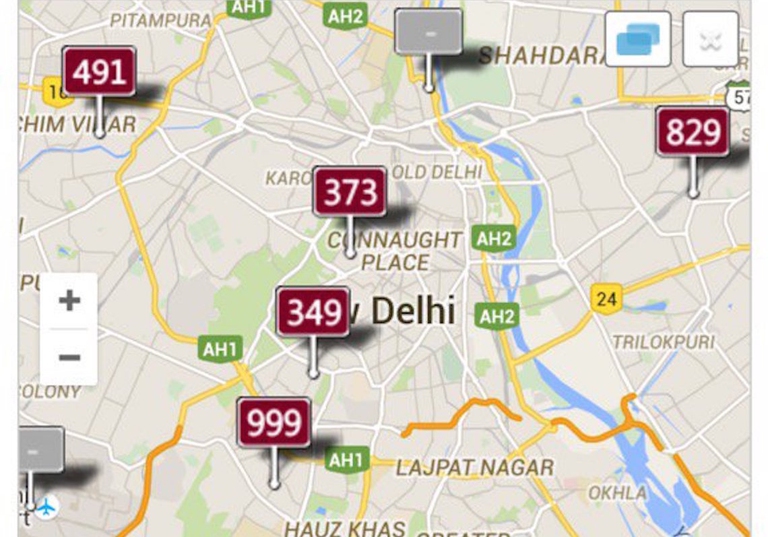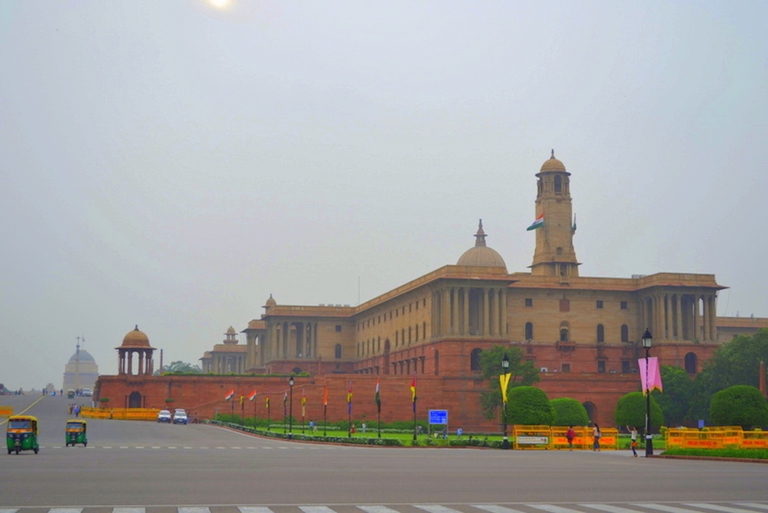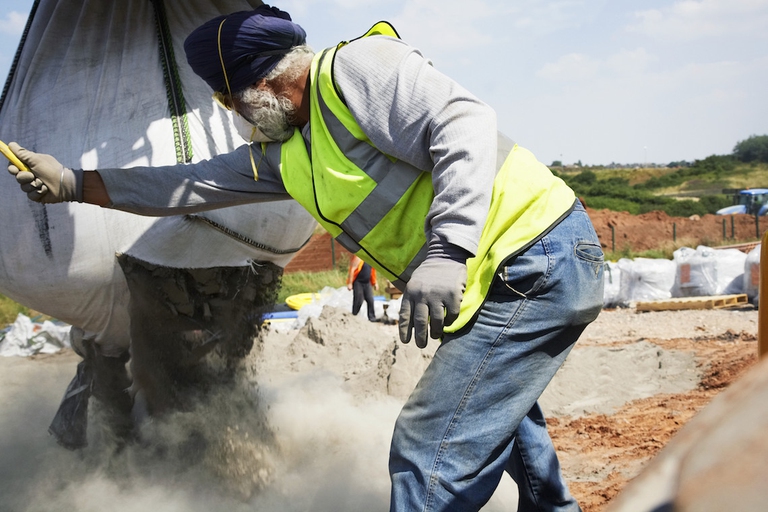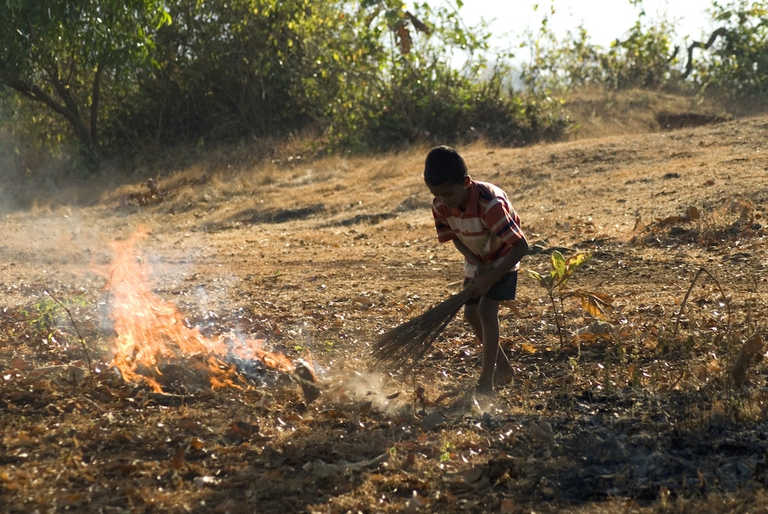
Sharon Lavigne, one of the six winners of the 2021 Goldman Environmental Prize, is fighting to protect her community from plastics corporations.
Thirteen of the world’s twenty most polluted cities are in India, with Delhi, its capital, being the most polluted according to a 2015 survey by the World Health Organisation (WHO). Air pollution is the fifth largest killer in the country, causing 620,000 deaths per year, with Delhi being one of the most critically polluted regions
Thirteen of the world’s twenty most polluted cities are in India, with Delhi, its capital, being the most polluted according to a 2015 survey by the World Health Organisation (WHO). Air pollution is the fifth largest killer in the country, causing 620,000 deaths per year, with Delhi being one of the most critically polluted regions as highlighted in a study by the US-based Health Effect Institute. Monitoring stations in the city have shown levels of suspended particulate matters PM 2.5 and PM 10 consistently three, four times over the safe limits of 60 and 100 micrograms per cubic metre respectively, with such levels increasing further in winter. These fine particles are linked to higher rates of chronic bronchitis, lung cancer and heart disease as they settle into the lungs and can pass into the bloodstream.
Vehicular emissions have been touted as the leading cause of such hazardous levels of air pollution in Delhi: its transport sector contributes 32% of the city’s greenhouse gas emissions says a report conducted by the Indian Institute of Science (IISc). The city has a total of 8.8 million vehicles against a population of 9.8 million, with an average of 1,400 vehicles added every month. This is more than the vehicles in the major Indian cities of Mumbai, Chennai and Kolkata combined.
To tackle this, the Delhi government has undertaken unprecedented steps like observing car free days in the city for certain routes, with some significant impacts. For example, the second car free day held on the 22nd of November 2015 resulted in a 55% reduction in nitrogen dioxide (NO2) along one of the car-free stretches, as well as a subsequent decreases in PM 2.5 and PM 10 levels. Encouraged by this, the government has now proposed the entire city go car free on the 22nd of January. Furthermore, the Apex Court (Supreme Court) has banned registration of luxury SUVs and diesel cars above 2000CC until March 2016 on a trial basis and doubled the Environmental Compensation Charge (ECC) on all commercial vehicles transiting through Delhi in an attempt to restrain non-Delhi bound vehicles from entering the city. The money collected will be used by the government to improve public transport and roads for cyclists and pedestrians. The government also issued an order that all taxis such as Uber must run on compressed natural gas by March.
The government also proposed the odd/even rule on a trial basis for 15 days starting from the 1st of January, whereby cars with odd-numbered plates plied on odd dates and those with even-numbered plates on even dates. The government will take stock of the findings from these 15 days and decide on the second phase of the scheme, which has already led to a 50% decrease in pollution levels according to reports.
Although the measures seem piecemeal and short-term, they are measures nonetheless. More holistic and multi-dimensional policy changes (involving other sectors like thermal plants and other issues like burning waste and road dust) need to be considered to guarantee a foolproof and long-term reduction in air pollution. Another solution could be implementing Euro 6 emission norms for automobiles in India, which would bring down particulate matter emissions by five times per vehicle compared to the Euro 4 norms Delhi currently follows.
Declaring living in Delhi akin to a “gas chamber” and describing the situation of an “emergency nature”, the city’s High Court has put the responsibility squarely on the Delhi Pollution Control Committee (DPCC)’s and the Central Pollution Control Board (CPCB)’s shoulders. Implementation and monitoring by these authorities with able support and cooperation from civil society will be vital to the success of these measures. Whether they bring about any long-term changes in people’s mindsets and reduce pollution levels on a consistent basis remains to be seen. Until then, make sure you have your masks handy.
Siamo anche su WhatsApp. Segui il canale ufficiale LifeGate per restare aggiornata, aggiornato sulle ultime notizie e sulle nostre attività.
![]()
Quest'opera è distribuita con Licenza Creative Commons Attribuzione - Non commerciale - Non opere derivate 4.0 Internazionale.
Sharon Lavigne, one of the six winners of the 2021 Goldman Environmental Prize, is fighting to protect her community from plastics corporations.
Plastic pollution is airborne too. Microplastics are being carried across continents by the wind, as a recent study reveals.
Levels of particulates in New Delhi in 2020 were once again far above safety thresholds, with extremely serious health consequences for its citizens.
A major oil spill in the Ecuadorian Amazon in April has left the Coca River polluted. The indigenous Kichwa are suing the companies whose pipelines broke.
Molecules that eat up plastic waste, including PET bottles, may soon become widely used as scientists leap ahead in developing new super enzymes.
In Italy’s Land of Fires between Naples and Caserta, activists like Carmen Medaglia are fighting to promote new ways of managing waste.
Toxic substances in Kamchatka’s waters have killed 95% of marine fauna and caused health problems for surfers. The causes, however, are still unknown.
A Magellanic penguin was found lifeless on a Brazilian beach: in its stomach, an N95 face mask. Researchers believe the animal died from ingesting it.
The drop in air pollution during worldwide lockdowns helped prevent thousands of premature deaths. But the situation is returning to pre-crisis levels.











